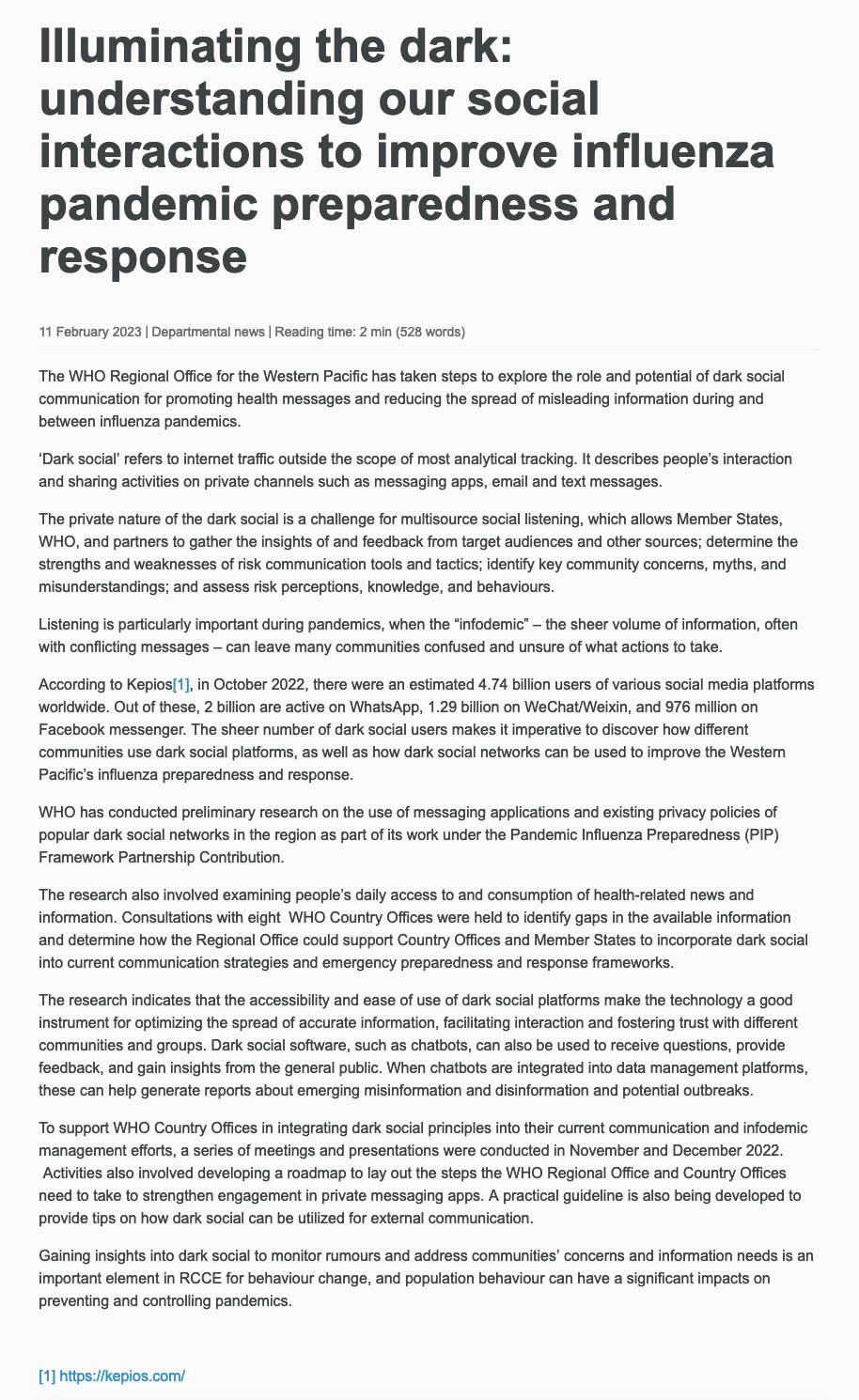(Updated on 14 April 2023)
The WHO Regional Office for the Western Pacific has taken steps to explore the role and potential of using closed messaging apps for promoting health messages and reducing the spread of misleading information during and between influenza pandemics.
The COVID-19 pandemic has highlighted the myriad ways people seek and receive health information, whether from the radio, newspapers, their next-door neighbour, their community health worker, or increasingly, on the screens of the phones in their pockets. The pandemic’s accompanying infodemic, an overwhelming of information, including mis- and disinformation following a health emergency, has overwhelmed individuals, communities and health systems. Too much information, or information overload, can induce information avoidance, such as trying to avoid the news or turning off alerts on their phones. This impacts how they receive information, and getting credible, accurate information to them becomes more challenging when people limit the sources of information they consult are limited.
Social listening is particularly important during pandemics, when the “infodemic” – the sheer volume of information, often with conflicting narratives – can leave many communities confused and unsure of what actions to take. Triangulating data from social listening, health system and other data sources can be translated into infodemic insights and recommendations, which can help improve health information delivery, community engagement, as well as the delivery, design and uptake of health services and design of public health and social measures. They can also help address confusion about health guidance.
In 2023, there are an estimated 4.89 billion users (1) of various social media platforms worldwide. Out of these (2), 2.6 billion are active on Facebook, 2.5 billion on YouTube, 2 billion on WhatsApp, 2 billion on Instagram, 1.31 billion on WeChat, 1 billion on TikTok and 931 million on Facebook messenger. The increasing adoption of social media by users makes it important to understand how people search for, find, understand, feel about and use health information. This can inform how social media can be used to improve the Western Pacific’s influenza preparedness and response.
WHO has conducted preliminary research on the use of closed messaging applications and existing privacy policies of popular social networks in the Region.
The research also involved estimating people’s daily access to and consumption of health-related news and information. Consultations with eight WHO Country Offices were held to identify gaps in the available information and determine how the Regional Office could support Country Offices and Member States to incorporate social media, including messaging apps, into current communication strategies and emergency preparedness and response frameworks.
The research indicates that the accessibility and ease of use of social platforms make the technology a good instrument for optimizing the dissemination of credible, accurate information, facilitating interaction and fostering engagement with different communities and groups. In addition, as demonstrated during the COVID-19 pandemic response, chatbots can also be used to collect user questions, deliver information, and glean insight from how users interact with the chatbot. When chatbots are integrated into data management platforms, these can help generate reports about people’s questions, concerns, information voids, confusion about health guidance, and circulating narratives and mis- and disinformation.
To support WHO Country Offices in integrating social media communication into their current communication efforts, a series of meetings and presentations were conducted in November and December 2022. A practical guide is also being developed to provide tips on how messaging apps can be utilized as part of communication strategies to improve influenza pandemic preparedness and response.
Efforts such as this contribute to better understanding of information ecosystems and to the identification of infodemic management strategies. Using social media, including closed messaging apps, to understand and address communities’ concerns and meet their needs for accurate information is an important element of actions to enable people to protect their health and that of others in future pandemics.
(1) Number of social media users worldwide from 2017 to 2027
www.statistica.com
(2) Most popular social networks worldwide as of January 2023, ranked by number of monthly active users
www.statistica.com

